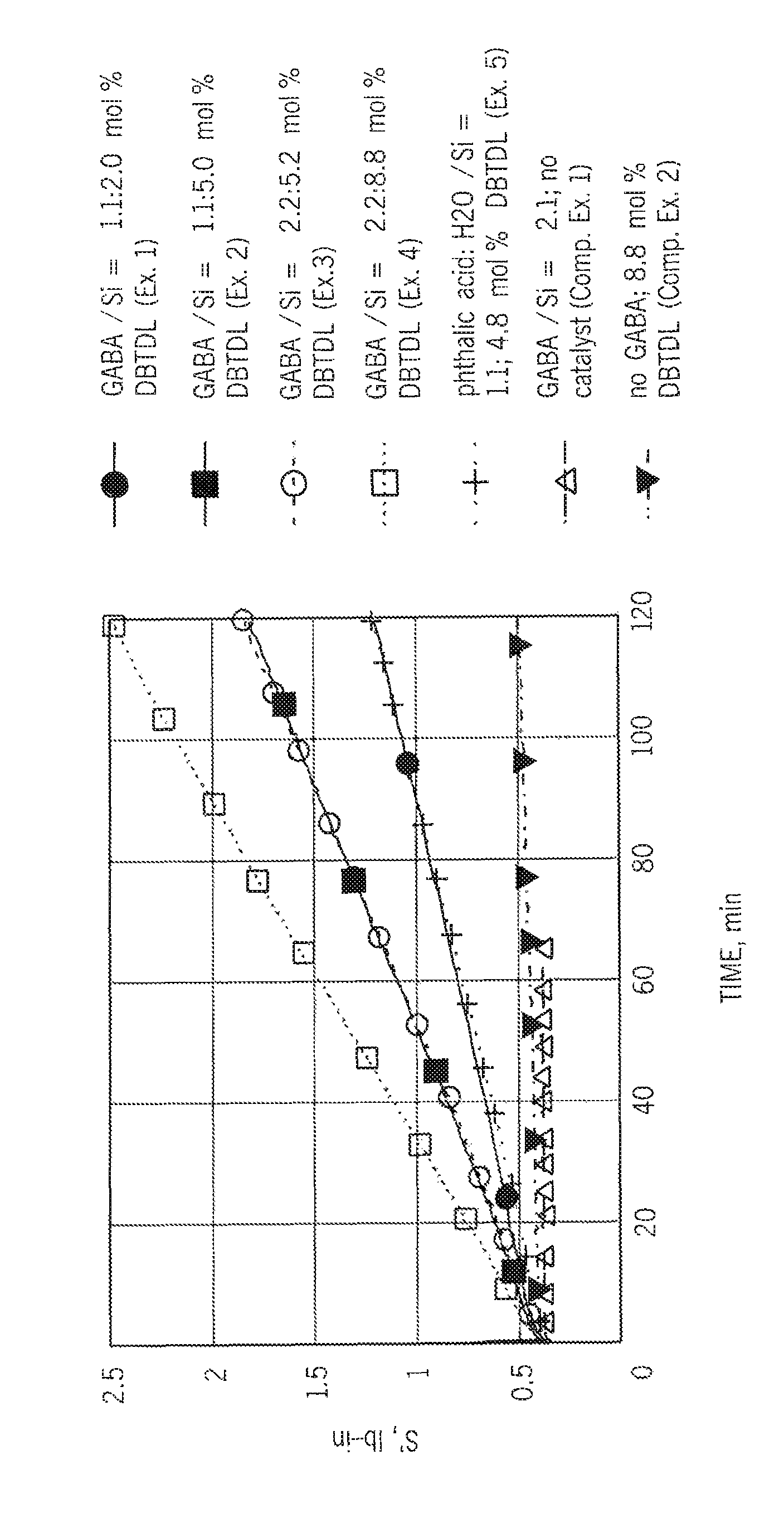Method for crosslinking polyolefins with in situ generated water
a technology of in situ generation and crosslinking, which is applied in the direction of synthetic resin layered products, tubular articles, textiles and paper, etc., can solve the problems of high cost, high cost, and inability to manufacture direct addition of water prior to fabrication,
- Summary
- Abstract
- Description
- Claims
- Application Information
AI Technical Summary
Benefits of technology
Problems solved by technology
Method used
Image
Examples
example 1
[0020]A pelletized sample of a copolymer of ethylene and vinyltrimethoxysilane (VTMS) (41.3 g) containing 1.5 wt % VTMS was added to a twin-screw mixer with setpoint of 128° C. and 25 RPM, followed 4 minutes later by 0.454 g γ-aminobutyric acid (GABA) and 10 minutes after that, by 0.052 g dibutyltin dilaurate (DBTDL). During the mixing process, the temperature ranged from 120-125° C. After a further 4 minutes, the mixer was stopped and the compounded material was removed from the mixer and allowed to solidify. A sample (4-6 g) of the composition was compressed into a disk between two sheets of non-interacting film and analyzed by oscillating rheometry at 100 RPM and 0.5° excursion at 140° C. The torque exhibited by this sample was 0.45 lb-in after 5 minutes and 0.81 lb-in after 62 minutes.
example 2
[0021]A sample of the same copolymer from Ex. 1 (41.3 g) was added to a twin-screw mixer with settings as in Ex. 1, followed 1 minute later by 0.471 g GABA and, 3 minutes after that, by 0.133 g DBTDL. During the mixing process, the temperature ranged from 118-123° C. After a further 5 minutes, the material was removed from the mixer and allowed to solidify. A sample (4-6 g) was compressed into a disk between two sheets of non-interacting film and analyzed by oscillating rheometry at 100 RPM and 0.5° excursion at 140° C. The torque exhibited by this sample was 0.47 lb-in after 5 minutes and 1.09 lb-in after 60 minutes.
example 3
[0022]A sample of the same copolymer from Ex. 1 (41.5 g) was added to a twin-screw mixer with settings as in Ex. 1, followed 1 minute later by 0.935 g GABA and 2 minutes after that, by 0.133 g DBTDL. During the mixing process, the temperature ranged from 120-123° C. After 5 minutes, the material was removed from the mixer and allowed to solidify. A sample (4-6 g) was compressed into a disk between two sheets of non-interacting film and analyzed by oscillating rheometry at 100 RPM and 0.5° excursion at 140° C. The torque exhibited by this sample was 0.45 lb-in after 5 minutes and 1.10 lb-in after 62 minutes.
PUM
| Property | Measurement | Unit |
|---|---|---|
| melting point | aaaaa | aaaaa |
| temperature | aaaaa | aaaaa |
| temperature | aaaaa | aaaaa |
Abstract
Description
Claims
Application Information
 Login to View More
Login to View More - R&D
- Intellectual Property
- Life Sciences
- Materials
- Tech Scout
- Unparalleled Data Quality
- Higher Quality Content
- 60% Fewer Hallucinations
Browse by: Latest US Patents, China's latest patents, Technical Efficacy Thesaurus, Application Domain, Technology Topic, Popular Technical Reports.
© 2025 PatSnap. All rights reserved.Legal|Privacy policy|Modern Slavery Act Transparency Statement|Sitemap|About US| Contact US: help@patsnap.com

